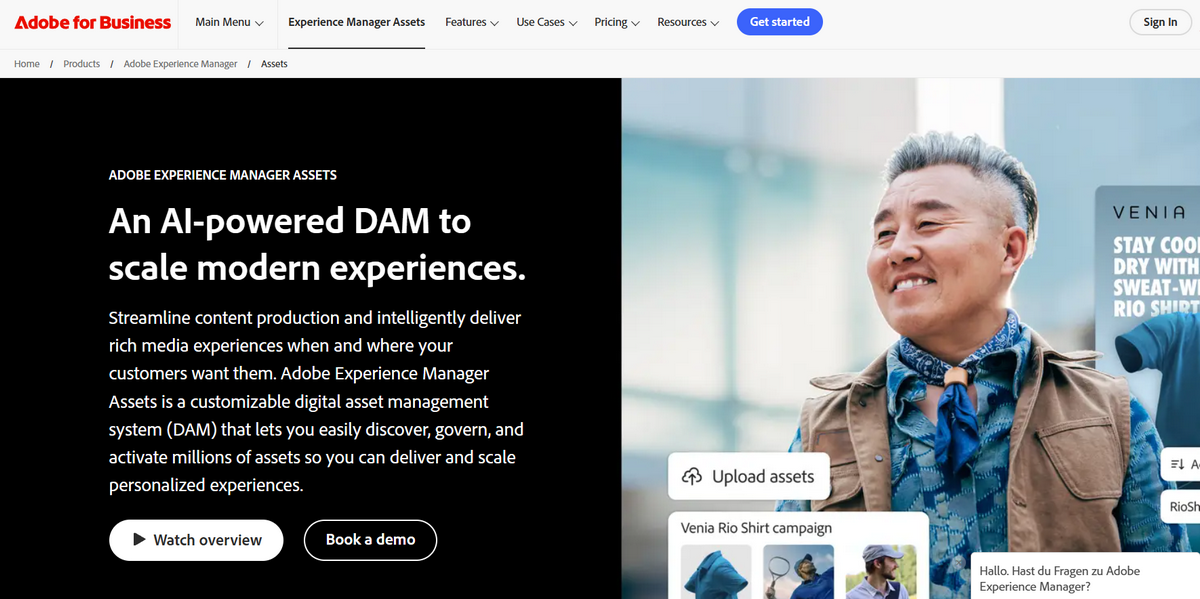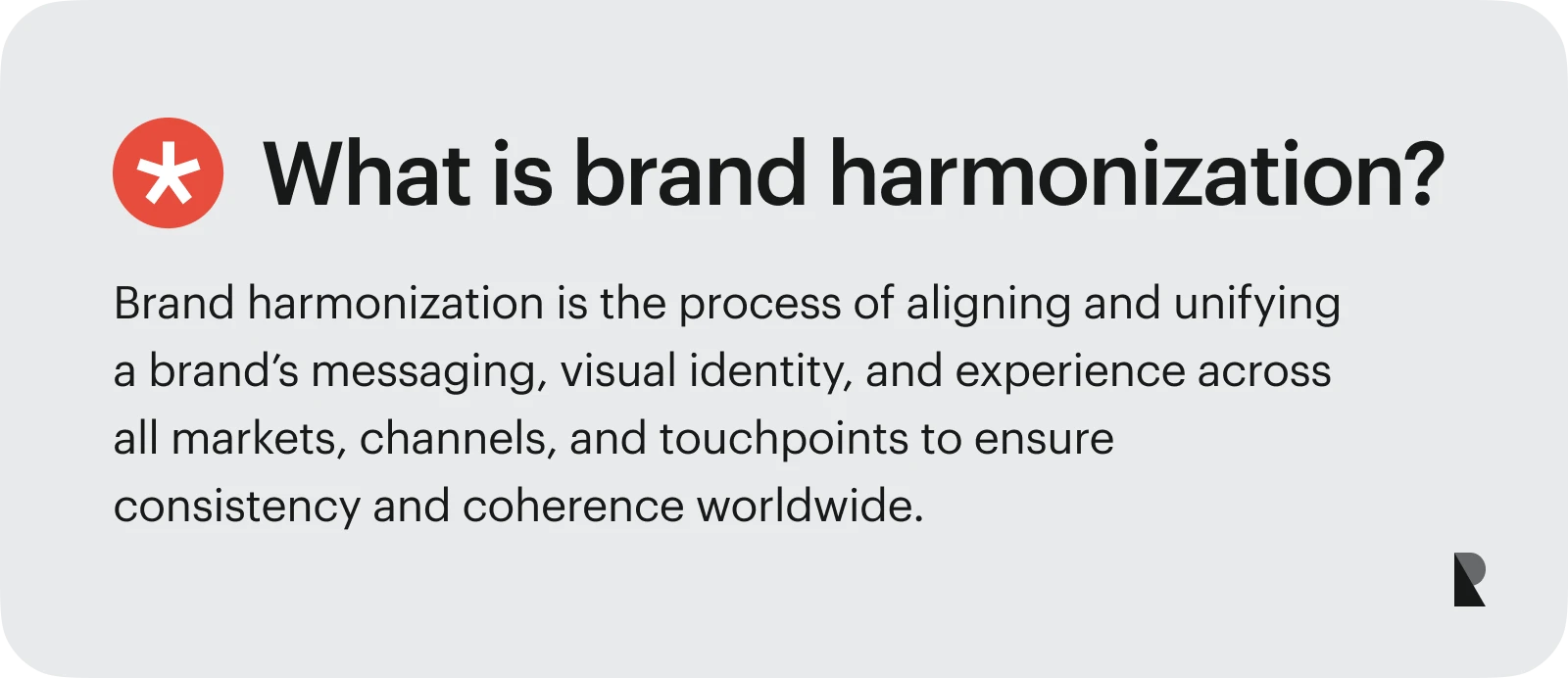
Did you know that international internet traffic doubled between 2019 and 2022, significantly boosting globalization in the economy? Last year, the cross-border trade reached a new high of $24 trillion, indicating an ongoing trend of international expansion. This means that more companies are entering the global market with their products or services, trying to expand their target audience and establish themselves in various regions and market segments.
Integrating with international markets offers numerous benefits but presents certain obstacles. One key challenge is balancing global consistency and local adaptation, which requires not only a thorough understanding of diverse markets but, most importantly, brand harmonization. It ensures a consistent identity across diverse markets, centralizes brand strategy, empowers strong market presence, and enhances brand recognition and trust.
What is brand harmonization, how to achieve it, and what challenges must be overcome? Our guide will address these questions and provide exceptional real-life examples.
Defining Brand Harmonization
Brand harmonization is aligning all aspects of a company with its core values, personality, and mission across all touchpoints and communication channels to deliver a coherent, consistent, meaningful, and authentic message to the target audience, whether locally or globally.
It goes beyond adding a logotype or branded colors in a specific interaction method. It encompasses everything from tone of voice to a range of emotions. Unlike brand consistency, which ensures uniformity, it guarantees that the company's identity, unique personality, and ethos are easily and clearly recognized in the communication method, whether the prospect encounters the company in a brick-and-mortar store or in the digital landscape through chat, website, or mobile application.
Brand harmonization benefits the company in various ways. It performs vital tasks such as standardizing visual identity elements, unifying tone, voice, and language with the archetype and personality, and aligning products and packaging. As a result, it naturally enhances customer experience, boosts brand equity, builds trust and loyalty, increases visibility and recognizability, and provides a strong competitive advantage in the market.
The key principles of harmonized branding are:
Consistency ensures the brand performs and communicates consistently and similarly across all touchpoints.
Clarity—It ensures that the company's message, values, mission, vision, and personality are easily understandable and free from ambiguity so that the intended audience and employees grasp the exact meaning.
Cohesion—It ensures that all brands' presentation elements, products, customer support team, marketing campaigns, and interactions with the market form a united whole.
It is highly advisable to hire a professional brand strategy company to ensure adherence to these principles, as you might face numerous obstacles.
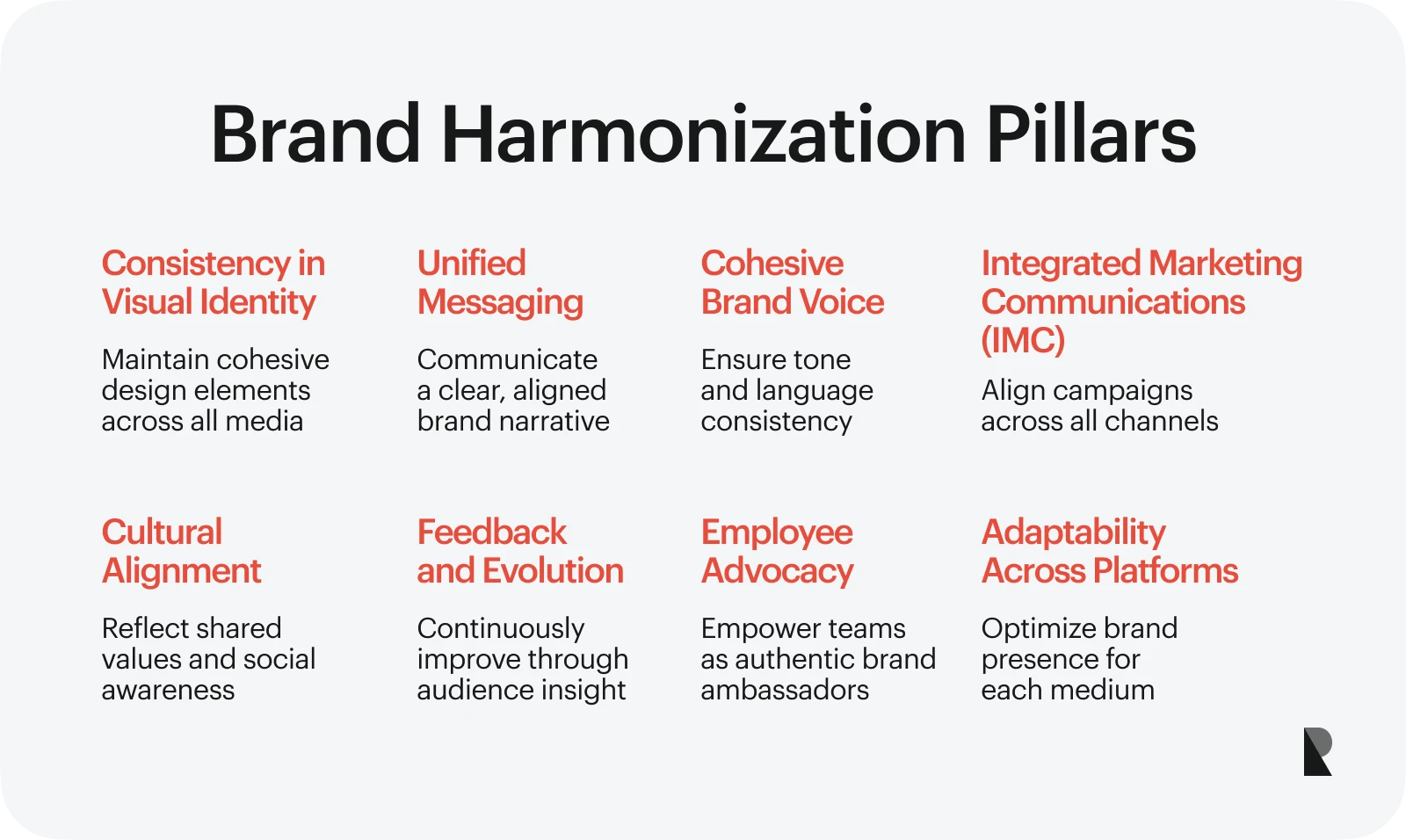
The Pillars of Brand Harmonization
Challenges of Brand Harmonization
Brand harmonization is a crucial process that yields significant benefits for companies. From ensuring consistent and coherent message delivery across diverse touchpoints to building trust and nurturing a loyal fan base, it lies at the heart of ultimate success.
However, several obstacles hinder its progress and prevent companies from enjoying all these benefits. Let's closely consider the main challenges of brand harmonization to understand what it takes to bring every element into consonance.
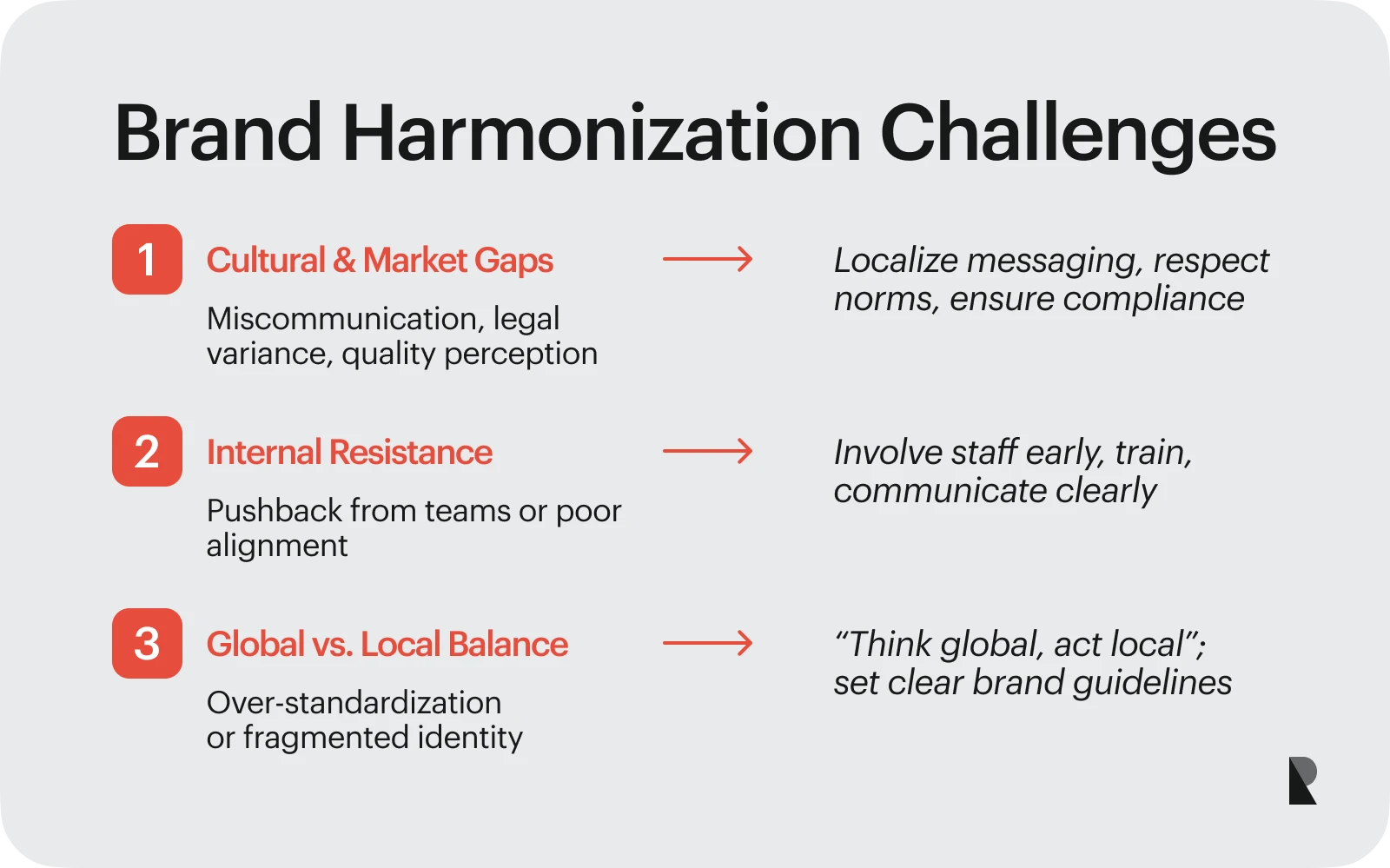
Cultural and market differences
While the digital landscape has opened doors for companies worldwide to a massive market, allowing them to reach their target audience without boundaries, it still presents its own obstacles.
Embracing cultural and market diversity is one of the biggest challenges. First and foremost, there is always a chance of miscommunication. Direct translations can be inaccurate, confusing, and sometimes even rude, leading to frustration and misinterpretation of not only the message but also the brand equity, vision, and personality.
Second, companies may easily alienate their audience with marketing and advertising campaigns when promoting services or products. Without a thorough understanding of cultural nuances and proper product adaptation to local preferences, companies risk undermining trust and making prospects unfriendly, hostile, or emotionally distant from a brand.
Third, companies may be confused by ethical and legal frameworks. Every country has its set of rules that impact a company's behavior, design, and presentation methods. For instance, the EU's data protection regulations require cookies and direct consent from visitors; therefore, every brand's conversation on the website must start with a special window to comply with this requirement.
Ultimately, there are varying perceptions of quality. Quality plays a crucial role in decision-making. However, its meaning may differ from country to country. For instance, some regions believe a high price indicates quality, while others may consider overpricing.
Internal resistance
Another big challenge that companies face when harmonizing their brand is internal resistance. The resistance from local offices is a natural and inevitable process, as not everyone may share your enthusiasm for change or adaptation to your way of thinking.
Internal resistance takes many forms, from outright hostility to productivity loss. Different reasons might cause it: it could be provoked by cultural factors, conflict of interests, lack of involvement, poor training and communication, and a fear of changing accustomed ways of working.
The good news is that there are several time-proven strategies to support your employees, align their efforts, and ensure your brand stays consistent and coherent with everyone working towards the ultimate goal. For instance, involving employees in the process and providing them with a comprehensive educational base are the best ways to face this pushback.
Balancing global and local needs
Lastly, one key challenge of brand harmony is striking a balance between global and local needs. In today's overly digitalized landscape, almost every business might have international implications, yet still face a regional reality.
When building a strong brand identity with unshattered brand equity, a one-size-fits-all approach never works, as it directly increases the risks of over-standardization or over-localization, making the company lose its personality. Furthermore, a global consistency and local relevance dilemma arises due to cultural and communication barriers, regulatory compliance, operational complexities, and even stakeholder resistance.
However, it is crucial to strike a balance between global and local needs to preserve the company's unique persona and vision so it might accomplish its mission. There are different strategies to adopt, from sticking with "Think global. Act local" behavior to establishing clear decision-making rights.
Strategies for Successful Brand Harmonization
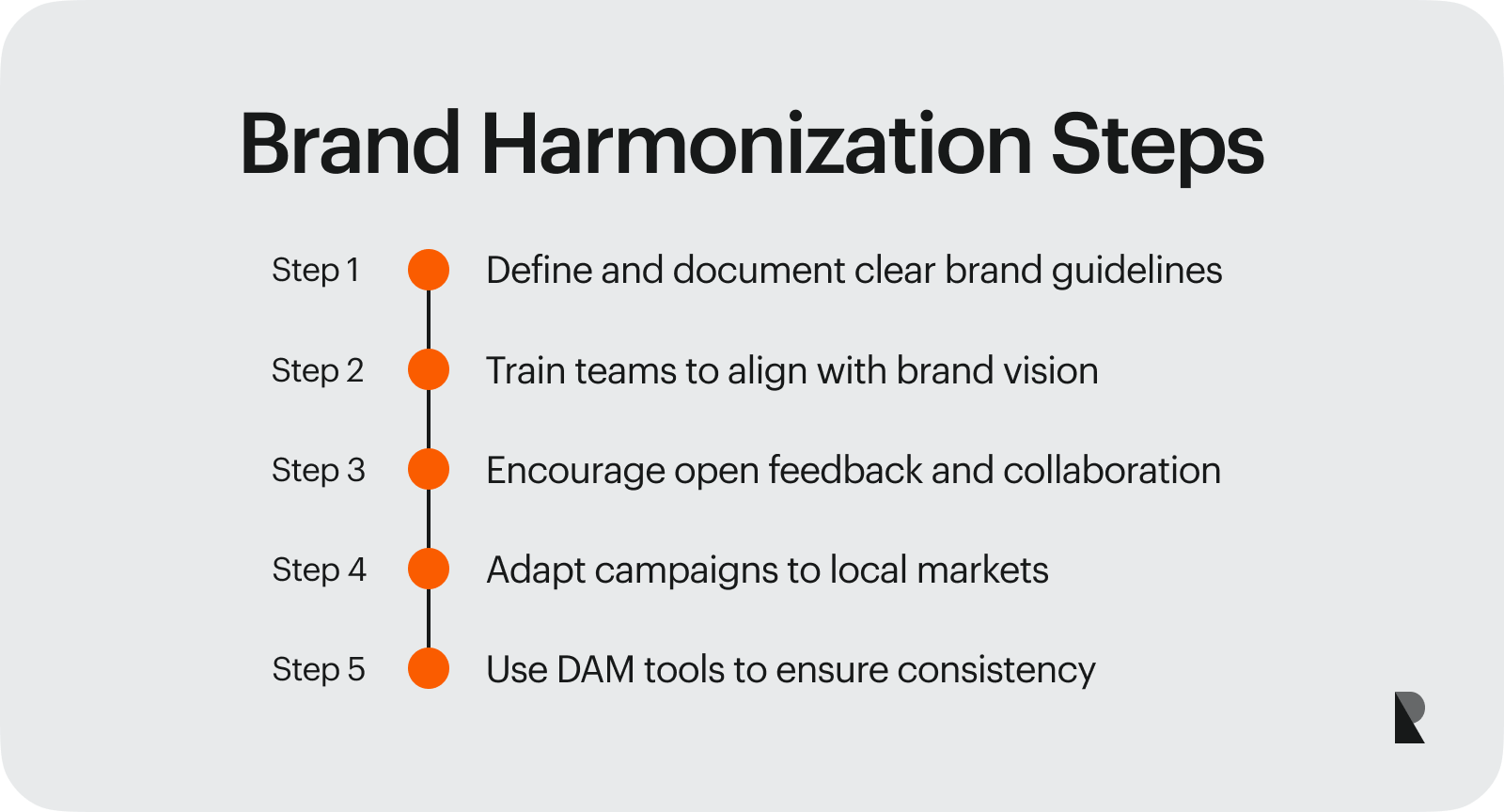
Brand harmonization is crucial for long-term success and growth, and ultimately, it establishes the company as a serious player in the market. It greatly benefits the business and its reputation, grabbing the golden opportunities for self-realization.
However, as a process of aligning brand elements and creating harmonious symbiosis across multiple interaction touchpoints, it also comes with challenges that halt the progress. Here are several time-proven strategies to overcome the most common obstacles. Consider them closely to choose the right partner from the brand design agencies.
Create clear brand guidelines
The brand guideline is a cornerstone of branding consistency and underlies a strong foundation for enhanced brand harmonization. This rulebook covers style guides for all brand elements and interaction methods and serves as a central reference for all stakeholders. It channels efforts in the right direction and helps to avoid distraction and confusion. It must be clear, clean, and refined.
Here are the basic steps to create one for your business:
- Dive deep into your branding value to define its core elements.
- Conduct in-depth and independent research on your target audience and competition.
- Determine your brand's archetype, personality, vision, mission, and goal.
- Design visual elements (logo, typography, color palette, imagery, icons, etc.) and interaction tools aligned with your core persona.
- Define language, vocabulary, and tone of voice.
- Structure and document every tiny detail.
Training and internal communication
Educating employees and partners is always underestimated, an afterthought for many startups and even well-developed organizations. As the simplest method of aligning stakeholders with the company's vision, mission, goals, and upcoming changes, it is crucial to ensure successful branding harmonization. It provides staff with the necessary skills, competencies, and tools to adapt and perform effectively. With clear communication and a shared knowledge base, everyone is on the same page and understands what and how to achieve the company's goals.
Here are several professional recommendations:
- Develop a comprehensive strategy that aligns with your short- and long-term goals, mission, and vision.
- Implement effective communication and training for all employees, starting from the top level.
- Introduce two-way communication to get feedback.
- Conduct regular training sessions, workshops, team-building events, and cultural programs to foster team cohesion and collaboration.
- Track performance, analyze and measure results, and then adapt.
Flexible local adaptation
With globalization, local adaptation is necessary as many cultural and regional nuances easily distort the key message and undermine the company's vision and reputation.
One of the best ways to adapt to markets with diverse preferences, languages, and cultures is to introduce local visual identity elements and conduct campaigns informed by a thorough market analysis. This way, the company increases its chances of speaking to its segmented audience in the same language, ensuring clarity, coherence, and unambiguity in communication and the brand's presentation.
It is also crucial to note that businesses must maintain their core identity during adaptation to remain true to their roots.
Technology and tools
Technology and tools have become essential for many organizations across various niches. Regardless of the product, market, and goal, they empower productivity, growth, and brand harmonization.
One critical tool to have in your arsenal is DAM. A Digital Asset Management (DAM) system is a comprehensive platform that acts as a centralized storage for a company's data (documents, images, and videos) with multiple helpful features for manipulation, such as organizing, sorting, or searching. It also allows for versioning and controlled access, making tracking and fetching necessary information easier.
DAM is a cornerstone of better collaboration, increased productivity, seamless communication, scalability, and enhanced branding consistency and coherence.
Examples of Successful Brand Harmonization
When introducing harmonization strategies, it is highly recommended to seek helpful insights from real-life examples. Here are three big companies that successfully harmonize their branding elements despite serving a global market and facing constant market fluctuations and customers' ever-evolving tastes and preferences.
Coca-Cola
Coca-Cola is among the best examples of brand harmonization in the global market. Present in over 200 countries, it has managed to preserve its unique brand identity and vision while finding its authentic way to the local market's heart, occupying the top position in the niche.
Their brand team has done a great job adapting visual elements and maintaining consistency across campaigns regarding the slogan, emotions, color palette, typography, and tone of voice. Just consider their "Share a Coke" campaign, first introduced in 2011 in Australia. In this campaign, their iconic logo was replaced with popular local first names and nicknames. It encouraged people to find and share personalized bottles with friends, resulting in huge success.
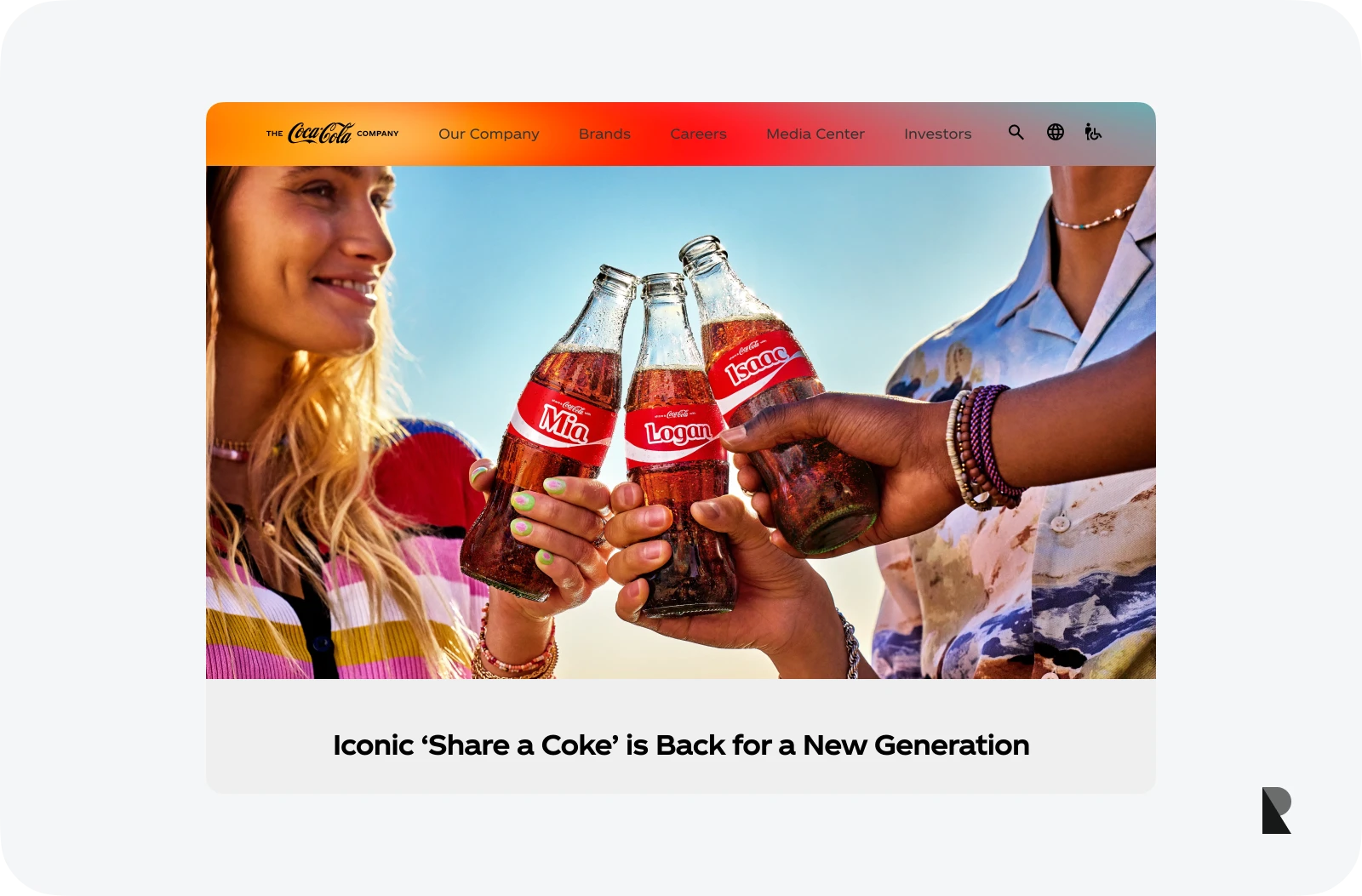
Apple
While Coca-Cola skillfully adapts to regional markets through its diverse and culture-inspired campaigns, Apple holds its ground, introducing minimal changes to its products and visual identity. However, with their adoration of minimalist design and unified, consistent user experience across online and offline touchpoints, this comes as no surprise and is anticipated by the customers.
The global standardization of products, visual identity, and overall feel works great for Apple. It enhances brand consistency, increases recognition, and fosters a unified visual identity. It also allows for quicker product launches and marketing campaigns, making it easier to access new global markets.
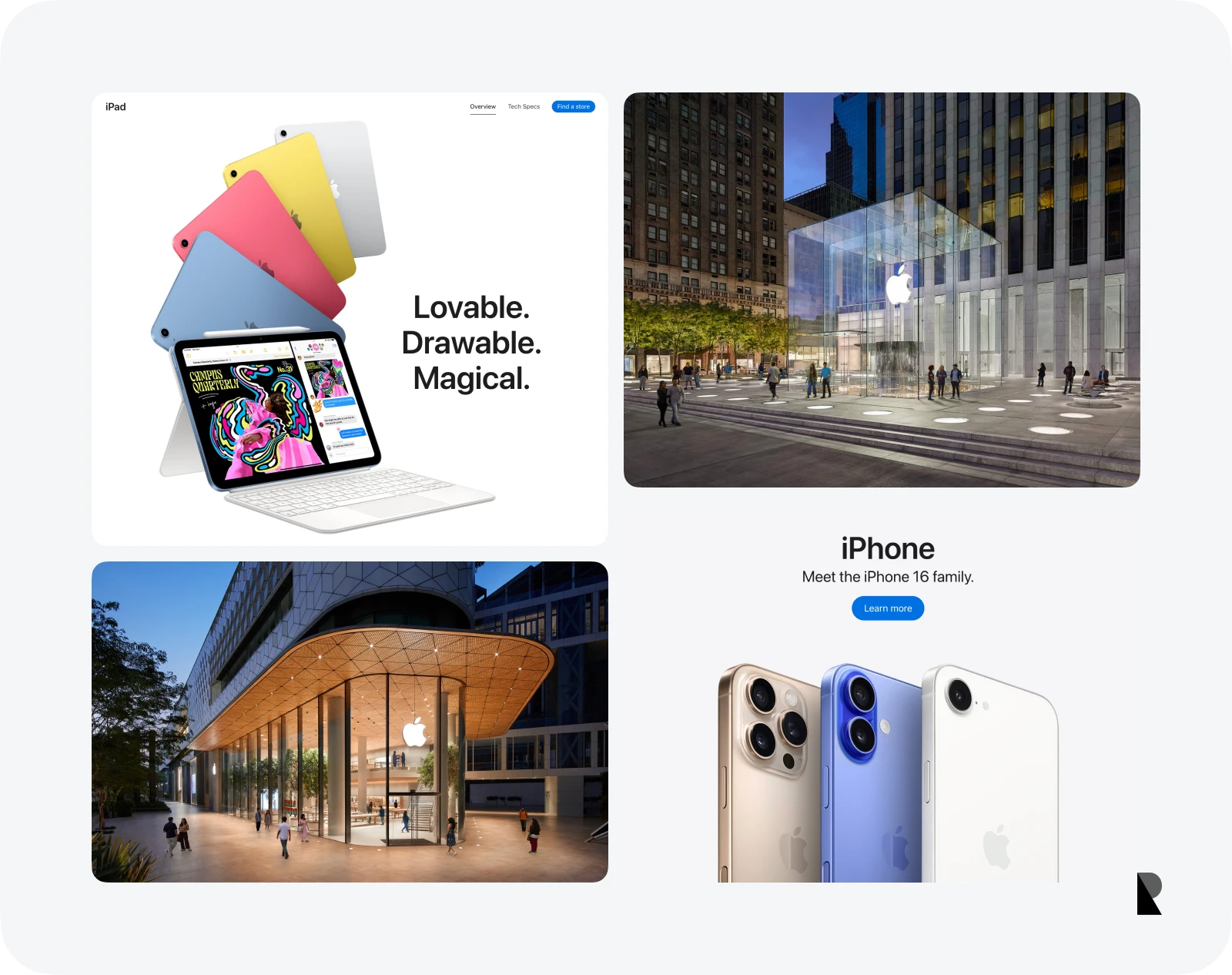
Nike
Nike's strategy for enhanced brand harmonization is centered on its global mission and one of the most recognizable slogans in the world, "Just Do It." Like Apple, the company does not change its core visual elements, such as the logo or typography, to adapt to local markets. However, it relies on local collaborations and partnerships to tailor its products to regional market segments.
For instance, their collaboration with Wu-Tang Clan (American Hip-Hop group), Patta (Amsterdam-founded streetwear brand), Isabel Marant (French fashion designer), and AMBUSH (Tokyo-based fashion label) helped them target specific interests, empower effective community building, reinforce their presence on the market, connect with customers, and deliver their message and vision without altering their personality traits.
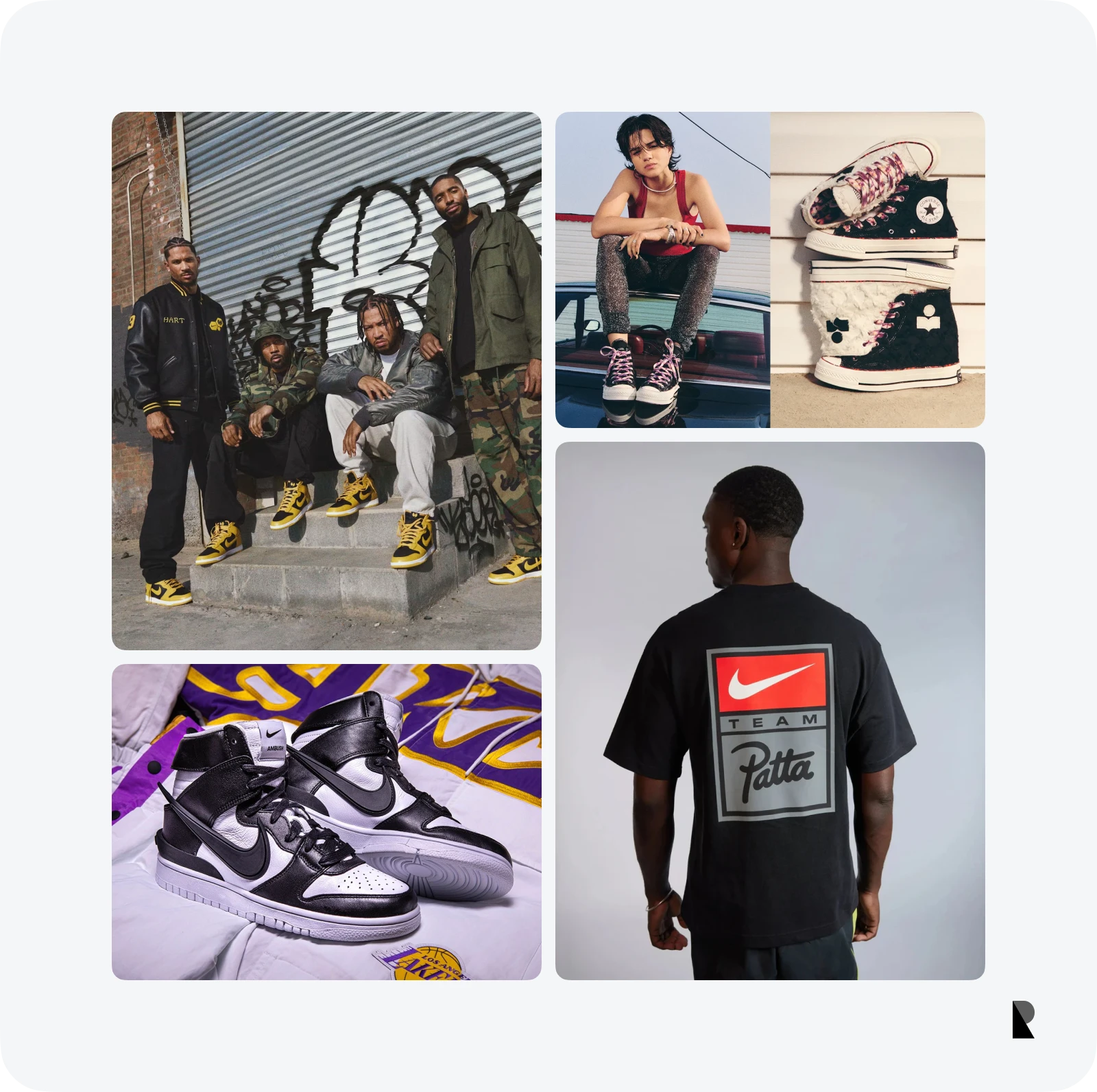
Conclusion
Brand harmonization aligns a company's presentation elements and communication with its core values and personality across touchpoints. In a globalized, digital-first world, it has become crucial as it helps companies to stay true to their roots and unique brand equity, while simultaneously speaking the local audience's language and ensuring consistent and coherent message delivery.
When executed well, brand harmonization benefits the company significantly. It opens golden opportunities for growth, expansion, and self-realization. In tandem with various campaigns, it inspires trust, enhances loyalty, and reinforces the company's presence in the market and on the competitive landscape.
However, achieving consonance requires a delicate balance between global consistency and local flexibility. Companies must adapt their strategies, establish style guidelines, educate employees, collaborate with professional brand agencies, and dedicate the necessary resources.
Oct 15, 2025
